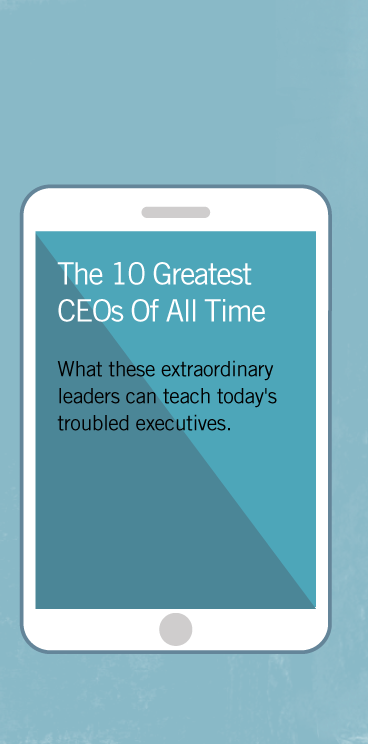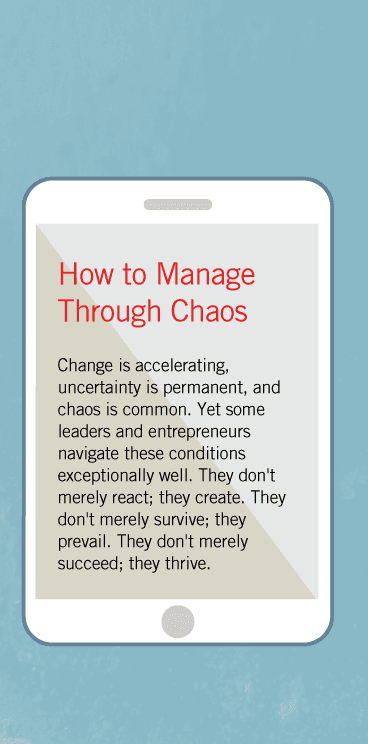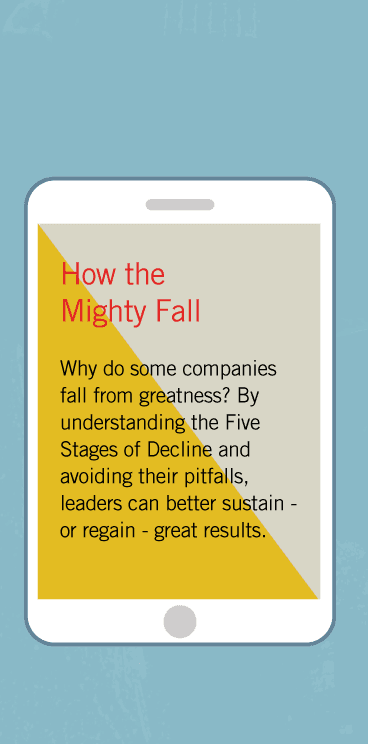And the Walls Came Tumbling Down
I start with this story because it foreshadows the organization
of the future, one in which the walls that have traditionally
defined organizational boundaries—what you own, what you control,
whom you employ, where they work—will cease to have any significant
meaning. Instead, the defining boundary will be a permeable membrane
defined by values, purpose, and goals; organizations will be held
together by mechanisms of connection and commitment rooted in
freedom of choice, rather than systems of coercion and control.
Executives will need to accept the fact—always true but now
impossible to ignore—that the exercise of leadership is inversely
proportional to the exercise of power. Indeed, they will need
to accept the fact that the whole idea of walls is becoming an
unproductive concept and that the most highly productive relationships
are all, at their core, mutual partnerships. I elaborate on these
points in this chapter, looking at them from the point of view
of four shifts executives need to make in order to be effective
in the next century.
First, executives must define the inside and the outside of the organization by reference to core values and purpose, not by traditional boundaries.
Every great organization is characterized by dual actions: preserve the core and stimulate progress. On the one hand it is guided by a set of core values and fundamental purpose—which change little or not at all over time—and on the other hand it stimulates progress—change, improvement, innovation, renewal—in all that is not part of the core values and purpose. Core values and core purpose in enduring great organizations remain fixed, while their operating practices, cultural norms, strategies, tactics, processes, structures, and methods continually change in response to changing realities. Indeed, the great paradox of change is that the organizations that best adapt to a changing world first and foremost know what should not change; they have a fixed anchor of guiding principles around which they can more easily change everything else. They know the difference between what is sacred and what is not, between what should never change and what should be always open for change, between "what we stand for" and "how we do things." The best universities understand, for example, that the core value of freedom of inquiry must remain intact as a guiding precept while the operating practice of tenure goes through inevitable change and revision. The most enduring churches understand that the fundamental values and purpose of the religion must remain fixed while the specific practices and venues of worship change in response to the realities of younger generations. Core values and purpose provide the glue that holds an organization together as it expands, decentralizes, globalizes, and attains diversity. Think of them as analogous to the principles of Judaism that held the Jewish people together for centuries without a homeland, even as they scattered during the Diaspora. Or think of them as analogous to the truths held to be self-evident in the U.S. Declaration of Independence or the enduring ideals of the scientific community that bond scientists from every nationality together through the common aim of advancing knowledge (for a more detailed discussion of this concept, see J.C. Collins and J.I. Porras, Built to Last, 1994, and "Building Your Company's Vision," Harvard Business Review, Sept.—Oct. 1996).
Core values and purpose define the eternal character of a great organization, the character that endures beyond the presence of any set of people or individual leaders. In the long run, individual leaders do not hold an organization together; core values and purpose do. In the best organizations, leaders are subservient to the core principles, not the other way around. Furthermore, an individual's membership in the organization is ultimately defined by shared core values and common purpose, establishing a form of connection that often endures beyond that individual's formal activities with the organization. Consider the U.S. Marine Corps. It is a tightly aligned, high-performance organization, and yet it has a highly permeable membrane of membership. Those who survive boot camp forever carry the core values of being a Marine, remaining connected to the family of Marines by the fundamental principle that "Marines take care of Marines." Marines almost never say, "I was a Marine." They say for the rest of their lives, "I am a Marine." I know of a prosperous businessman who took special interest in the plight of a homeless man for the simple reason that they had both served in the Marine Corps decades before. They had not served in the same unit; they were not of the same generation; they had never even met. And yet once a Marine, always a Marine, and Marines take care of Marines. It is a lifetime connection that transcends an individual's active participation as an enlisted soldier.
As we move into the next century, core values and purpose as
a defining boundary will become even more important. Given the
obvious trends in organizations—greater decentralization and
autonomy, wider geographic dispersion, increased diversity, more
knowledge workers, technology and travel that make going into
the office a less relevant activity—the bonding glue that holds
organizations together will increasingly be in the form of shared
values and common purpose. No matter how much the world and its
organizing structures change, people still have a fundamental
need to belong to something they can feel proud of. They have
a fundamental need for guiding values and a sense of purpose that
give their lives and work meaning. They have a fundamental need
for connection to other people, sharing with them beliefs and
aspirations to form a common bond. More than at any time in the
past, people will demand operating autonomy—freedom plus responsibility—and will simultaneously demand that the organizations they are
part of stand for something.
Second, executives must build mechanisms of connection and commitment rooted in freedom of choice, rather than relying on systems of coercion and control.
Of course you can't just establish shared values and common purpose and then expect everything to hold together; you also need tangible mechanisms that foster the commitment required to produce results. However, unlike the systems of the past, these mechanisms will increasingly rely on commitments freely made and will grant wide operating autonomy, rather than relying on coercion and control.
Allow me to use my research laboratory as an example. My large-scale research projects require the contributions of highly dedicated and talented research assistants. The research teams, usually four to six people, operate in a high-performance, high-energy climate characterized by a powerful sense of team unity and work ethic. During the summer session, team members frequently work more than forty hours per week, putting forth whatever it takes to accomplish objectives on time with thoroughness, accuracy, and quality. They generally feel that they've produced some of the best—if not the best—work of their lives while working on the teams.
And yet this high-performance environment relies almost not at all on the traditional methods of coercion and control. We have no offices or fixed hours; researchers attend team meetings, but otherwise they work on their own, managing their own time. If they want to work intensely for three days a week and take four-day weekends, fine; if they want to work from midnight to 6 A.M., fine; so long as they meet their commitments, they are completely free to arrange their own time. They have no budget constraints; if they need something to get their work done, they simply buy it and get reimbursed. They're not coerced by the carrot of a career path or long-term employment, as the lab operates under a strict "no permanent full-time employees" model. There is no direct impact on assistants' graduate study requirements (for example, no threat of grades), as the lab operates as an independent entity in an informal joint venture with the University of Colorado. And money is not a controlling factor; although they're paid better than other graduate research assistants, they earn less per hour than they would if they spent their summer at a corporation or consulting firm.
The whole key to the high-performance climate on the research team is our use of mechanisms of commitment and connection rooted in freedom of choice. We operate off of a clear set of deadlines and project objectives, yet team members generally select their own deadlines, as people feel much more committed to a deadline that they have had a hand in setting. We break the research projects into discrete chunks and then have a draft in which individuals bid for the pieces they would most like to work on, a process that creates much greater commitment than preassigned responsibilities. We have weekly gatherings at the lab in which team members interact with each other, and we assess overall progress and discuss emerging ideas; the meetings serve as a glue, bonding the team members together. Most important, we design the work process so that team members must draw from each other's work as the project progresses. This creates more commitment to perform than anything I could say, as no team member wants to let his or her comrades down or look inadequate relative to peers. When team members request to miss a key team meeting, they do not ask me for permission; rather, they must personally call each team member and get his or her consent, thereby delegating the power of consent to the team. And as a precursor to all our mechanisms of commitment and connection, each person invited to join the team receives a written and verbal orientation on team values, purpose, and performance standards and is asked to join only if he or she can commit to those principles. Before joining, each person is told: "If you have any doubt about whether this is the right place for you, then it is in our mutual interest that you decline this opportunity."
The commitment plus freedom model requires heavy up-front investment
in selecting the right people. It does not try to mold people
to be what they are not. People often ask, "How do we get individuals
to share our core values?" The answer is, "You can't." You can't
open somebody up and install new core values in his or her belly.
The key is to find, attract, and select people who have a predisposition
to sharing the core values, and to create an environment that
consistently reinforces those core values, buttressing it with
mechanisms of connection and commitment. If you select the right
people in the first place—and they select your organization—then
you don't need to control them. They don't need fixed hours. They
don't need to come into offices where they can be watched. They
don't need rules. You need to guide them; you need to teach them;
you need to provide direction; you need clear objectives; you
need mutually agreed deadlines; you need mechanisms of commitment
and connection. But you don't need control. Most organizations
underinvest in the selection process and then try to correct for
bad choices through control and overmanagement. If you select
the right people, you don't need to mold people. Indeed, the moment
you feel the need to control and mold someone, you've made a selection
mistake.
Third, executives must accept the fact that the exercise of true leadership is inversely proportional to the exercise of power.
The best and most innovative work comes only from true commitments freely made between people in a spirit of partnership, not from bosses telling people what to do. Leadership cannot be assigned or bestowed by power or structure; you are a leader if and only if people follow your leadership when they have the freedom not to. I've always been impressed with the mechanisms that W.L. Gore & Associates, Inc. has put in place to create a climate of leadership. Gore uses the twin mechanisms of lattice structure and natural leadership, which give every individual the freedom to establish working relationships with any other individuals without regard to any chain of command. In addition, any individual can by self-initiative assume leadership for an objective, again without regard to any hierarchy, so long as others freely commit to follow. To facilitate this flexibility, no one at Gore has a formal title; there are no vice presidents, no directors, no chief this or chief that; everyone has the simple title associate. The beauty of these mechanisms is that they allow those with true leadership potential to quickly rise to positions of responsibility. Conversely, those without leadership skill will quickly be rendered impotent as associates simply bypass them and align around those who can lead. In effect these mechanisms allow groups of associates to fire their boss.
If you're uncomfortable with the idea of vesting people with
the power to fire their boss, then you're not ready for the task
of leadership in the next century. As people become increasingly
comfortable with ambiguity, they will increasingly trade the single-job
model for a multiclient model, thus granting to any single organization
or leader less power over their lives and livelihood. All those
people who lost their jobs at IBM in the 1990s, for example, suddenly
came to understand that low ambiguity (a single job) comes at
the price of high risk (all eggs in one basket). You can already
see this change to the lower-risk, multiclient model happening
as older executives bemoan the "lack of loyalty" in the younger
generation. And yet there is no less loyalty in the younger generation.
They are simply granting less power to any single organization;
they are less subservient because they have more degrees of freedom.
And the moaning executives are simply confusing subservience to
power with loyalty to cause. But they are very different concepts
indeed, and executives will need to cultivate the latter and relinquish
dependence on the former in order to be effective. Eventually
we will look back at single-job employment structures as a somewhat
barbaric form of organization, much the way we view indentured
servitude today. We will increasingly see a shift away from ownership
of people in any form, including the traditional job, which is
nothing other than an advanced form of owning people by owning
their time. In the future every relationship, at least in the
best organizations, will be viewed conceptually as a joint venture.
Fourth, executives must embrace the reality that traditional walls are dissolving and that this trend will accelerate.
We are moving toward a world in which the concept that walls are necessary is becoming archaic and is no longer useful. The most progressive corporations have jettisoned the idea that they can exist in a walled-off cocoon of private activity. The customer revolution, for example, reflects a dissolution of the walls companies once tried to construct between customers and companies. One leading company, Granite Rock, has taken this change so far as to extend to its customers the power to decide for themselves whether and how much to deduct from an invoice if they feel dissatisfied. Granite Rock customers work in partnership with Granite Rock people toward the mutual goal of continually improved Granite Rock products that benefit both customer and company. The quality revolution is also about dissolving artificial walls. For instance, a central tenet of any good-quality effort is that suppliers and producers will operate in partnership to create a better end result.
All around us we can see signs of tumbling walls. Technology allows us to access Harvard lectures without being admitted inside the exclusive gates of the Harvard student body. The internet allows us to share databases directly with colleagues at organizations around the world, without being on the staff of those organizations. And the dissolution of walls is not limited to the work world but is occurring in all aspects of life and society. The walls around the traditional family are dissolving. It's not uncommon, due to divorce and complex family histories, for an adult to be parenting children with whom he or she has no genetic link or to be mentoring genetic offspring who live in someone else's household. This may not be ideal, but it is a fact of modern life. At a national level the scale and impact of manmade systems, both economic or technical, are making national boundaries less relevant. A German academic colleague has told me that the most psychologically significant event for the German people in the past decade was not the tearing down of the Berlin Wall but the failure of the Chernobyl nuclear reactor, which made it clear that the problems and disasters of one nation cannot be contained within that nation's legal boundaries. Racial walls, although still visible and oppressive where they exist, have become less concrete. Political leaders in both the southern United States and the nation of South Africa have no choice but to learn to be effective across racial lines, else they have no hope of holding major political office.
In part we are simply seeing a fulfillment of the promise of the Enlightenment, particularly in the tradition of John Locke, which sought to dissolve the walls between sovereign and subject and emphasize the rights and dignity of the individual. But what is happening today is more than a philosophical shift. It is also a reflection of a practical fact: the most productive relationships are in their essence mutual partnerships rooted in a freedom of choice vested in both parties to participate only in that which is mutually beneficial and uplifting. Moreover, the social systems best suited in the long run to meeting the material and spiritual needs of the majority of people tend to distribute, rather than concentrate, power. Unless we see a resurgence of tyranny (always a threat, as dictatorship is a highly efficient form of organization), there is every reason to believe that this trend will continue, and accelerate.






